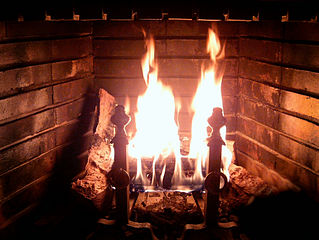So check out this headline: “Air quality in Merced County is getting worse. Officials say it might be your fault.” The headline with accompanying article was published in the Dec. 12, 2017, edition of the Merced Sun Star newspaper.
Wow. This one sure caught my eye!
So, what was meant, exactly, by Merced County air quality “getting worse”? A question: Is Merced County air quality worsening? Kind of a vague construct, don’t you think?
The article, meanwhile, goes on to talk about particulate matter pollution in the wintertime and residential wood burning.
I went looking for answers. My hope was to find a useful resource tool that could provide related, relevant data which was both recent and extended over a period of time in order to try to establish a trend.
The place I checked first was the San Joaquin Valley Air Pollution Control District’s (SJVAPCD) Web-based Archived Air Quality or WAAQ System. The latest year for which data here is available is 2014.
Next, I referenced the California Environmental Protection Agency Air Resources Board’s (ARB) “Data Download Specification for PM2.5 Hourly (PST), All Data for 1/1/2017 to 12/15/2017” data table. (This relates to Merced’s South Coffee Avenue Monitoring Site data).
Time period of analysis is from Jan. 1 to Feb. 28 and from Nov. 1 to Dec. 31, 2017. Why these (inclusive dates), only?
Nov. 1 through Feb. 28 is recognized as the season for fine-particle pollution. This is also a period when wood-burning restrictions in the San Joaquin Valley are in effect.
Average PM 2.5 from Jan. 1 through Jan. 31 is 10.29 micrograms per cubic meter of air.
To try to confirm, I visited the Valley air district’s Web site RAAN (Real-time Air Advisory Network) tool. Using this tool, average PM 2.5 from Jan. 1 through Jan. 31 is 10.23 micrograms per cubic meter. (Disclosure: some hourly data was missing for Jan. 13).
I next used the same exact process for the month of November. From the representative data and through my calculations, I found that using the ARB data, average PM 2.5 for Nov. is 17.82 micrograms per cubic meter. Meanwhile, using the RAAN analysis tool, average PM 2.5 for November is 17.80 micrograms.
The idea is to get the same number of days total for both the Jan./Feb. data and the Nov./Dec. data so that a direct comparison of the two time periods could be made. Since January has 31 days but February doesn’t and since November has 30 days and December has 31, and since I can only obtain data up to Dec. 14 (based on the day and time of my search) in terms of getting data for a full 24-hour period, I decided to limit my time-period analysis to 44 days total for the Jan./Feb. (Jan. 1 – Feb. 13) period and 44 days total for the Nov./Dec. (Nov. 1 – Dec. 14) period, for a time period of 88 days total.
Okay, so calculating for February using ARB data, for the period of Feb. 1 to Feb. 13, average PM 2.5 is 9.12 micrograms per cubic meter. As for the RAAN data for the same time period, average PM 2.5 is 9.16 micrograms. (Disclosure: some hourly data is missing for Feb. 13 regarding both ARB and SJVAPCD reporting tools).
Now, for ARB data for December, average PM 2.5 is 24.87 micrograms per cubic meter. Meanwhile, regarding SJVAPCD RAAN data, average PM 2.5 is 24.76 micrograms per cubic meter. (Disclosure: some hourly data was missing on half or seven days total from both sources for identical days analyzed).
So, based on the above information, what can be concluded is the beginning of the year compared to the latter part, air quality has indeed gotten worse.
However, before any definitive conclusions can be reached, it is important to note that the beginning of 2017 had a significant amount of precipitation, whereas the latter part did not. So, there was more mixing of the atmosphere early in the year compared to year’s end.
More information is obviously needed in order to be able to arrive at a conclusive or definitive answer.
Lastly, as for whose fault it is for worsening Merced, County air quality, it is most likely the activities of humans that attributes to the amount of fine particulate matter pollution in Merced air. Based on readings and times of the heaviest concentrations, the culprit would point more than anything else to wood-burning activity.
You read it here second.
– Alan Kandel
